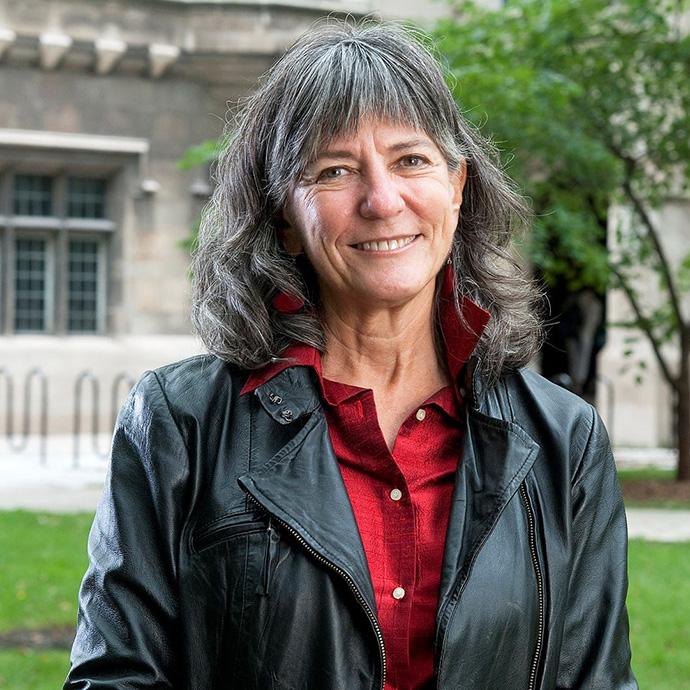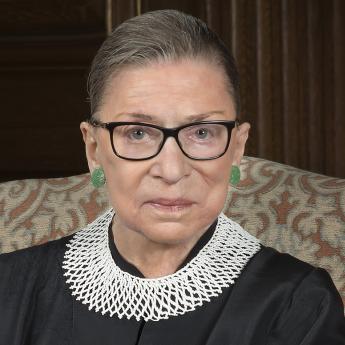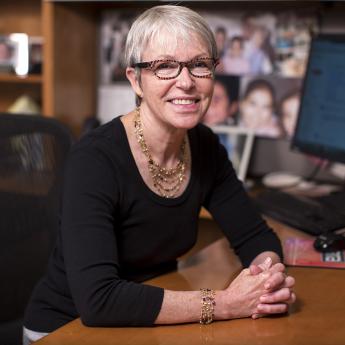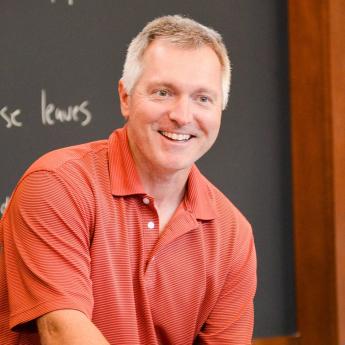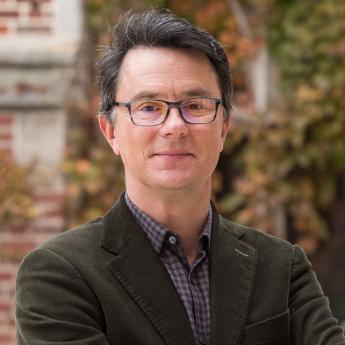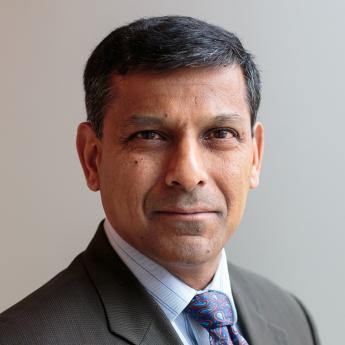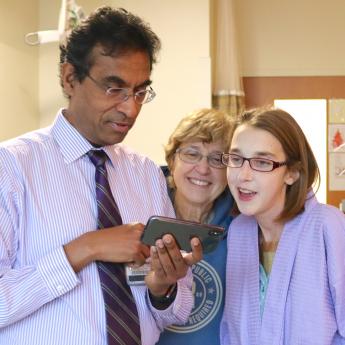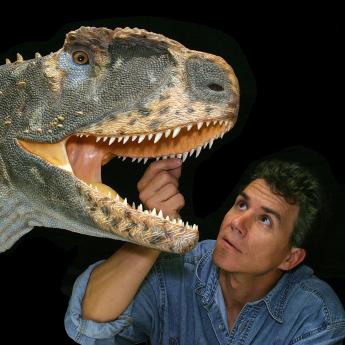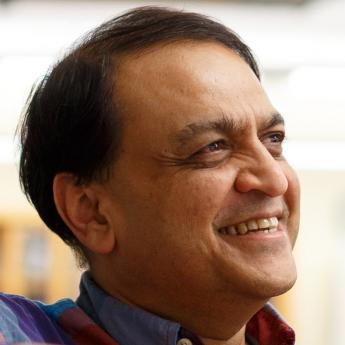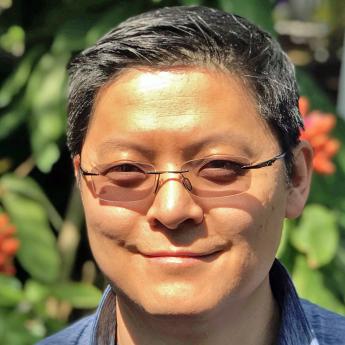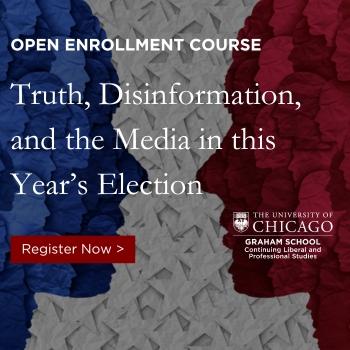Show Notes
Language shapes our world. But when we speak, there is actually a secret conversation happening beyond our words. It’s happening not with our mouths—but with our hands.
Prof. Susan Goldin-Meadow is a distinguished scholar of psychology at the University of Chicago. Her research into deaf children who were never taught sign language led her to studying why the gestures we do all day may contain more information about our minds than we realize. Now she’s included all her insights in a new book, “Thinking With Your Hands—The Surprising Science Behind How Gestures Shape Our Thoughts.”
Subscribe to Big Brains on Apple Podcasts and Spotify.
(Episode published January 25, 2024)
Subscribe to the Big Brains newsletter.
Please rate and review the Big Brains podcast.
Related:
- To Gesture Or Not To Gesture—Forbes
- An expert reveals the secret language of “Thinking With Your Hands”—Salon
- Gestures are a subtle and vital form of communication—The Economist
- Susan Goldin-Meadow's new book
Transcript:
Paul Rand: The University of Chicago Leadership and Society Initiative guides accomplished executive leaders in transitioning from their longstanding careers into purposeful encore chapters of Leadership for society. The initiative is currently accepting candidates for its second cohort of fellows. Your next chapter matters, for you and for society. Learn more about this unique fellowship experience at leadforsociety.uchicago.edu.
Language shapes our world. It’s how we communicate, how we learn, how we get things done. But when we speak, there’s actually a secret conversation happening beyond just language that we often forget to pay attention to. It’s not happening with our mouths, but with our hands.
Susan Goldin-Meadow: The hands are really a fountain of information.
Paul Rand: Susan Goldin-Meadow is a distinguished professor of psychology at the University of Chicago. She started her career with an extremely unique and surprising discovery. Deaf children who were never taught sign language developed their own hand language through gestures.
Susan Goldin-Meadow: And what the children created was something that looked much more like language in their gestures.
Paul Rand: And that got her thinking. What if the gestures all of us do every day contained more information than we thought?
Susan Goldin-Meadow: We don’t think about our gestures and they just come out and they are what they are, sort of acting as we didn’t care.
Paul Rand: What if they aren’t just superfluous additions to our speech, but a foundational part of communications?
Susan Goldin-Meadow: We integrate gesture and speech even when we’re little kids. And little kids, even before they know words, they are making sounds as they gesture.
Paul Rand: When we talk, our hands move almost involuntarily like they have a mind of their own.
Susan Goldin-Meadow: You can’t think too hard about the gestures that you produce because it’s a little like breathing. If you think too hard about breathing or about walking, you trip yourself up. It’s a little too automatic.
Paul Rand: But Meadows research shows that it’s not so much that our hands have their own mind, but that they’re revealing things about our own thoughts, beliefs, and intentions that we may not even realize.
Susan Goldin-Meadow: Our hands really are a source of information about our minds. Find all of these ideas that aren’t quite being expressed in speech.
Paul Rand: If we can understand how and why we gesture, it can open up a world of possibilities that may help us communicate better, reveal our deepest thoughts, and even help us learn more effectively.
Susan Goldin-Meadow: I think that we look at gestures, we take the information in, we process it, but we don’t always know we’ve done it. Sometimes we do. So when we ask teachers to look at children who are describing their knowledge of a problem, sometimes the teachers will say, “Well, he knows such and such,” and describe the information from both speech and gesture. But in other times they’ll go, “Oh, well he said this, but he gestured this.” And so in both cases, the teacher has the information, but in the second the teacher has noticed that it’s coming from the hands.
Paul Rand: Could understanding gestures be as important as understanding language itself? Goldin-Meadow thinks so, and she says this could have important implications for every aspect of our society, from the classroom to the courtroom, our workplaces, and our homes.
Susan Goldin-Meadow: So I think it might not be such a bad thing to take gesture seriously and to elevate it as a recognizable means of communicating information.
Paul Rand: Welcome to Big Brains, where we translate the biggest ideas and complex discoveries into digestible brain food. Big Brains, little bites, from the University of Chicago Podcast Network. I’m your host, Paul Rand. On today’s episode, what our gestures tell us about our minds.
First off, thanks for taking time. And I really thought getting there that you would have a different camera angle so I could totally see your hands the entire interview.
Susan Goldin-Meadow: I will let you see my hands.
Paul Rand: Oh, that helps a lot.
Susan Goldin-Meadow: I’ll make it so that you can see my hands.
Paul Rand: Well, good. Well, I would expect nothing less out of this. And we can just start with the most basic question, Susan, of what in the world is a gesture and why do we think it’s important to study them?
Susan Goldin-Meadow: So gestures are many different things to many different people. Most people, when you say gestures, think of things like the okay symbol or the thumbs up symbol. And all of those are gestures that we call them emblems. They’re conventional, they differ across cultures. What I’m talking about is how your hands move when you talk, co-speech gestures, movements that go along with your speech as you converse.
Paul Rand: And these gestures are different than sign language too, right?
Susan Goldin-Meadow: Very different from sign language. So sign language is a categorical conventional language, just like spoken language. And you can do it wrong, you can be wrong, use the wrong order, the wrong syntax, the wrong lexical item. But gesture, it’s not clear that there is a standard form. It might be something that somebody thinks is a little odd, but nobody is going to say, “That was a wrong gesture,” because we don’t know what a right gesture is.
Paul Rand: Goldin-Meadow has spent a good part of her career studying gestures, but that’s not where she started. She was originally motivated by a different question altogether. If all human language got wiped out tomorrow, would we recreate it in the same way? Would it come back different or would it not come back at all?
Susan Goldin-Meadow: Okay, so this is a long story.
Paul Rand: Okay.
Susan Goldin-Meadow: Are you ready?
Paul Rand: I am ready. I am ready.
Susan Goldin-Meadow: Okay.
When I was in graduate school, the question that I was really, really interested in was where does language come from? And the population that I decided to study were deaf children born to hearing parents who had not been exposed to sign language. And I thought, this is a great place to look at where language comes from because they can’t use speech, they’re too deaf for that. They didn’t have cochlear implants, it’s a long time ago, and they’re not getting sign language.
So in fact, what we found was that these children, each individual child, it wasn’t a group of children, invented their own gesture languages, which they use to communicate with their hearing parents. And I think that study suggests that if language were wiped out, we would indeed, each individual would be able to come up with the core of language, fundamental properties. Not all of language, for sure not all of language. But the very beginning, we’d not only do it, but we’d all come up with roughly the same kind of thing, same structures. So I got into the gestures that accompany speech almost as a comparison or control for looking at deaf children inventing their own gesture languages.
Paul Rand: Surprisingly, the research shows that while there may be cultural or personal differences in the way we gesture, we all do it even when we think that we don’t. In one of Goldin-Meadow’s experiments, people actually apologized for not having gestured enough for her to study. But when she looked at the tape, they had actually gestured a lot. It seems as though all human brains have an innate need to gesture.
Susan Goldin-Meadow: In fact, we have done work on blind children or individuals who have been blind from birth. So they’ve absolutely never ever seen anybody gesture because they’ve not seen anything since birth. And they gesture when they talk.
Paul Rand: Not only do blind people gesture, but they do it even when speaking to another blind person, despite the fact that the other person obviously cannot see the gestures.
Susan Goldin-Meadow: That’s very unusual. It’s really telling. It sort of suggests that once you open your mouth, your hands have to come up.
Paul Rand: This is how embedded gesturing is in our brains. And a now famous work neuroscientist, V.S. Ramachandran, documented how one patient without arms who experiences phantom limbs would claim that she could feel them gesturing.
Susan Goldin-Meadow: Yeah, this is an observation by Ramachandran. It’s just an amazing observation as she sits there talking to her doctor and saying, “My arms are moving as we speak.” The other thing I think that’s interesting about her, and of course, she has no arms, so it’s just her feeling that she has arms. But when she walks, we usually swing our arms when we walk. And she says, “When I walk, my arms don’t swing.” So she’s actually quite selective about how she thinks her hands are moving, they move with speech and not just any old time. Interesting.
Paul Rand: Which really on its own is just so interesting because there’s something that is needing to come out.
Susan Goldin-Meadow: I feel like hand and mouth are really linked at some very early age. When babies talk, they also move their bodies and they move their hands and whatever. So they’re really linked. And it’s very interesting that these movements that look like they’re hand wavy are just very linked to speech.
Paul Rand: The question is, why do our brains have this deep need to gesture? What are these gestures actually doing? Most obviously, they’re communicating extra information that may be missing from our speech. There was another study asking adults to describe a Tweety Bird cartoon that you referenced in the book.
Susan Goldin-Meadow: Yes. That was done by David McNeill, who’s a researcher here at the University of Chicago. So he just wanted to elicit gesture in an easy way that was just sort of, kids could look at it, adults could look at it. So he used one of these Sylvester the Cat and Tweety bird. It was called Canary Row. And he showed it to many, many, many, many people, adults and kids and people who speak a variety of different languages. And he did a meticulous and gorgeous analysis of the gestures that are produced when people speak.
Paul Rand: After watching the cartoon, the researchers had participants describe what they saw to someone who hadn’t seen it. But there was a catch. They were supposed to explain what happened inaccurately with their words while gesturing what really happened with their hands. For instance, saying Sylvester went down the pole at the same time, making a going down the stairs motion with their hands.
Susan Goldin-Meadow: What Dave McNeill and Adam Kendon, who was another researcher at the time, really pushed and gave us evidence for, is that the gestures that we spontaneously produced with our hands convey information.
Paul Rand: Amazingly, when people who had never seen the cartoon but had it explained to them, they said, Sylvester went down the stairs, not down the pole. Their brains had seen the gesture, and that was what they remembered, rather than the lie that was said in speech.
Susan Goldin-Meadow: If somebody says he’s going to the right and gestures to the left, that I think what we’ll notice. And if you notice it, we usually trust the gesture.
Paul Rand: Right, right, right.
Susan Goldin-Meadow: Because up until that point, everybody had believed that gestures are effective, but they just express how we feel, how we feel about ourselves, how we feel about our interlocutor, how we feel about our topic. They’re all about emotion and things like that. But what McNeill and Kendon showed is that, no, it’s not just about the conversation, it’s bits of the conversation, and those bits are picked up by others. So you can’t ignore it.
Paul Rand: And gestures can convey all sorts of information, even information we may not even realize we possess, as Goldin-Meadow documented in a series of studies.
Susan Goldin-Meadow: We started off by, I had a videotape from one of my advisors who had videotaped a conservation paradigm, and I used it in my class every single year. So if you’re looking at a kid who needs to understand that the conservation of liquid quantity, and you pour the water of a tall container into a wide flat container, and the kid thinks the water has changed. It’s wrong, but he thinks the amount of water has changed. We noticed that for some children, the kinds of things they said in speech were different from the thing that they said in their hands. So they were expressing different information in speech and in hands on the same problem. Kids say, “Well, the water here is high and the water here is low.” They’re talking about the height. That’s all they’re talking about. Another one will say, “The water here is high and the water here is low,” while at the same time using a gesture that expresses the width for the first container and the width for the second container.
So this child is talking about width with his hands and height with his mouth. And if you look across all of his responses, he never talks about width. Never. But he does gesture about width. So for that child, that information isn’t really accessible to speech. For him, those thoughts are expressed only in the hands. When you get these mismatches, you’re speaking one idea here. And at the same time, you’re expressing a different idea in your hands. You’re not speaking it, you are expressing it, and therefore, you are thinking it. So we can see what you’re thinking by looking at your hands. If we just listen to you, we’ll miss the information that’s coming out in your hands.
Paul Rand: So this whole concept of, and you do this as the title of your book, is Thinking with Your Hands. And you think about it, I would expect, well, it’s going to be speaking with your hands, not thinking with your hands. Tell me about this idea of that gestures are also, and this kind of plays into what you’re saying, that they’re also communicating unconscious thoughts. Talk a little bit about that and how does that end up working? And if you can, give an example of what you mean.
Susan Goldin-Meadow: So for example, if you want to talk about men and women who are, and you want to say they are equally good leaders. Some people will say, “Well, men are good leaders, but women are just as good leaders,” and indicate with their gestures that they are putting men on top of women.
Paul Rand: Because the hand that you’re showing me is one’s above, that’s the male hand.
Susan Goldin-Meadow: Right. And the female hand is down by the chin, the male hand is up by the forehead. And when you do that, I don’t think you are necessarily even trying to hide something. I think you may not even know what your own beliefs are, but you did do it.
Paul Rand: As I keep trying to think through the implications of all of this. And the courtroom is another place where there’s discussion around about gesturing. How does it play in the courtroom?
Susan Goldin-Meadow: So I think it’s actually potentially a big issue in the courtroom because nobody pays attention to gesture, and the final record in a courtroom is all written. But there’s lots of interplay. And we certainly know lawyers use gesture and it could really affect the witness.
So we’ve done some very artificial studies, but it’s trying to simulate interviews like this where we bring in a performer or a clown or something to kids classrooms, and the kids see the performer, and then they are asked questions about the performer. And we ask them questions that are perfectly open-ended like, what color was the hat he was wearing? That’s great. And the kid, “This hat’s red, blue, green,” or whatever. But he’s not wearing a hat, so we’re misleading him. And so what happens is that the kid actually ends up saying that he’s wearing a hat, even though he wasn’t. Well, you can ask a perfectly open-ended question like, what else was he wearing? But if you do a hat gesture at the same time, you are misleading them and you’re misleading them with gesture. But that’s not going to get written on the transcript. If a lawyer, even unconsciously, sort of cues the witness into what they want them to say, they’ll say it, and it sounds like it’s coming from the witness, but in fact, it’s a leading question from the lawyer.
Paul Rand: Okay, wow.
Susan Goldin-Meadow: I know it’s really powerful I think, and we don’t write it down. And the other way it can work is for a little kid or a victim who if they ask, what was the guy wearing? And the kid says Nothing but does this. He puts two little circles around his eyes but says absolutely nothing. And then the lawyer says, “Oh, was he wearing glasses?” Now, that sounds like it’s a leading question from the lawyer, but in fact the information came from the kid. So it can be both directions, and I think it’s very, very important. There’s no way of videotaping everything and going through that in a court. But I do think you could do something like look at when new information has been introduced and then check the videos for when that information was introduced and see whether it was introduced in gesture or in speech.
Paul Rand: The courtroom isn’t the only place in our society that gesture may shape a person’s outcome. Another is the classroom. That’s after the break.
The University of Chicago Leadership and Society Initiative guides accomplished executive leaders in transitioning from their longstanding careers into purposeful encore chapters of leadership for society. The initiative is currently accepting candidates for its second cohort of fellows. Your next chapter matters, for you and for society. Learn more about this unique fellowship experience at leadforsociety.uchicago.edu.
If you’re getting a lot out of the important research that’s shared on Big Brains, there’s another University of Chicago podcasts network show that you should check out. It’s called Capitalisn’t. Capitalisn’t uses the latest economic thinking to zero in on the ways that capitalism is, and more often, isn’t working today. From the debate over how to distribute a vaccine to the morality of a wealth tax, Capitalisn’t clearly explains how capitalism can go wrong and what we can do about it. Listen to Capitalisn’t, part of the University of Chicago Podcast Network.
Gestures can show what’s happening in our minds even when we’re not conscious of it. But they do more than just display our thoughts. They may even shape them as well. One way it does this is through helping us learn better.
Susan Goldin-Meadow: So what we’ve done is we’ve told children to say something, give them some words to say about learning a math problem or whatever. And then we give them some gestures to say at the same time. And the gesture conveys slightly different information from the words. And they have to produce both the words and the gestures as they’re learning the task. Those children do much better on the task and learn information that was expressed only in gesture, better than children who were given only speech or only speech and matching gesture, gesture that says the same thing as the speech. So they learn more. They not only learn better, but they learn the stuff that was conveyed in gesture.
Paul Rand: So picture a math problem like three plus three equals four plus x.
Susan Goldin-Meadow: So the kid was told to say, I want to make one side of the problem equal to the other side of the problem.
Paul Rand: So three plus three equals six. To make each side equal, they would need to make the other side of the equal sign four plus two.
Susan Goldin-Meadow: The typical gesture that goes with that is you sweep under one side and you sweep under the other side. And we make them do this over and over and over again. And by the end of the study, some children had learned, and most of them were in the gesture plus speech condition. Everybody was producing the speech, but only the gesture plus speech people were producing the gesture. And it turns out to be true over and over again, that when we encourage these children to do gestures that are meaningful, they don’t know they’re meaningful to start, but they are meaningful, they learn. And a very interesting aspect that we’re just looking at is over the training period, we make them gesture in a particular way. So they don’t own these gestures. They’re not really gestures to start, they’re just movements. But for the children who learn, their gestures change in subtle ways over the training period. And so it looks as though they own them.
Paul Rand: In one of these math studies, a week after the experiment, the children’s brains were scanned as they were asked to solve the problem, but they were told not to do any gestures. Even though they weren’t moving, kids who learned through the gesture had brain regions responsible for motor function activate while kids who learned without gesture didn’t. More of the brain was involved in the learning.
Susan Goldin-Meadow: So either the gestures are helping them learn or the gestures are at the least reflecting what they’re learning.
Paul Rand: Do you think the idea of helping educators learn about gesturing and how they can use it to help people learn is something that should be more purposefully taught?
Susan Goldin-Meadow: I do, actually. I don’t think that we should tell teachers to gesture in a particular way. I think people are good at gesturing, it comes naturally. But I think that teachers can use gestures in several ways. They can pay attention to their kids’ gestures, their students. And when they pay attention to their students’ gestures, they can see things that they can’t hear. And so they’ll know things that their children are producing and knowing, and that gives them sort of a way of diagnosing what the children know. They can also say to the children, Look, next time you explain this, could you please move your hands?” When they do that, new ideas tend to come out. And again, they can take advantage of that and take a look at it. And then the other way in which the teachers can do this is gesture themselves, which will then encourage the children to produce more gestures. Because you tend to produce gestures if somebody is gesturing with you. So if the teachers themselves gesture, that’ll bring out gestures in the kids, and then it just keeps going on.
Paul Rand: This obviously goes beyond the classroom as well. In fact, Goldin-Meadows research shows that a children’s amount of gesturing at a younger age can be a good predictor of their language learning later on. So parents should pay close attention.
Susan Goldin-Meadow: Yeah, when they’re watching their kids, just notice what the kids are doing because the kids at a certain stage are going to do more in gesture than in speech. The kid can’t say two words together, but points at a cup and says, “Mommy.” Well, that mommy cup is a two word sentence. And then they say, “Oh yeah, that’s mommy’s cup.” That’s useful. That’s a good moment to tell the kid that that’s mommy’s cup means point at a cup and say, “Mommy.” So by paying attention to the gestures, you can sort of know where your child is at and teach to that moment. That’s true for teachers as well.
And even for clinicians, we have some evidence showing that at 18 months, we had children who had brain injury and children who were typically developing. All of the brain injured kids were at the low end of word production. They just were at the bottom. But some of the brain injured children gestured like typically developing children and others did not. So we continued to watch them. And by 30 months, what we found is the kids who were at the bottom of gesture, remember they were all at the bottom for words, the kids who were at the bottom for gesture stayed at the bottom for words. But the kids who were at the top for gesture, brain injured kids, or in the middle improved, and their word learning was as good as a typically developing kid. They moved into the normal range.
Paul Rand: But it can also help us learn, even as adults.
Susan Goldin-Meadow: They can also help us organize our thoughts, which is presumably why the blind gesture. It just helps you keep your thoughts in order and maybe even change your thoughts a little bit just by active gesturing.
Paul Rand: If GEs truly are a crucial part of learning and conveying information, then all of us in this post pandemic world may have a big problem on our hands, no pun intended. Today, and even on this conversation, we’re Zoom and you actually switched position a little bit so I can see you’re gesturing and I’m paying more attention to your gestures than I ever pay attention to gestures. But now we are in a Zoom culture.
Susan Goldin-Meadow: Right.
Paul Rand: What is getting lost? Because as I look at me on the screen, you can’t see my hands. I’m not gesturing in a way that’s visible to you.
Susan Goldin-Meadow: Right.
Paul Rand: What is lost by not being able to have open access to my Zoom, on Zoom, to the gestures that I could be making?
Susan Goldin-Meadow: Well, I think all of the information that we’re talking about is being lost. So if I’m a teacher and my kid is on Zoom, I’m not seeing that the ideas that the child might have implicitly. And if I express something as a teacher, my student isn’t seeing that information. I think it is really a loss. Now, whether we will adapt and say less with our gestures, I doubt it. It might be better if we just enlarge our little Zoom boxes or do something like that. But I do think all that information is being lost.
Paul Rand: Sometimes, it’s the small unnoticed things in life that makes a huge difference. Goldin-Meadow’s work certainly shows how something as overlooked as gesture could shape a child’s success in school or change the outcome of a court case. One thing’s for sure, in the future, I’ll be making sure my video screen is zoomed out enough for everyone to see how I’m talking and thinking with my hands.
Matt Hodapp: Big Brains is a production of the University of Chicago Podcast Network. We’re sponsored by the Graham School. Are you a lifelong learner with an insatiable curiosity? Access more than 50 open enrollment courses every quarter. Learn more at graham.uchicago.edu/bigbrains. If you like what you heard on our podcast, please leave us a rating and review. The show is hosted by Paul M. Rand and produced by Lea Ceasrine, and me, Matt Hodapp. Thanks for listening.
Episode List
Supreme Court Justice Ruth Bader Ginsburg On Polarization, Discrimination and Her Favorite Dissent (Ep. 30)
For this episode, please enjoy a special conversation with Supreme Court Justice Ruth Bader Ginsburg discussing her history and role on the Supreme Court.
Why Your Social Life is a Matter of Life and Death with Linda Waite (Ep. 29)
A distinguished University of Chicago professor’s groundbreaking research provides insights into the overlooked importance of social health.
How John List Revolutionized Economics by Studying People in the Real World (Ep. 28)
Behind the scenes of policymakers reshaping our society, there are researchers supplying them with answers to our most pressing questions. University of Chicago economist John List is one of those people.
Trump and the Changing Power of the Presidency with William Howell (Ep. 27)
One of the leading scholars on the American presidency gives us insight into the Trump era, the history of impeachment, and the power of the office.
How the Loss of Community Threatens Society with Raghuram Rajan (Ep. 26)
One of the world’s leading economists explains why our communities could hold the answer to many of society’s problems.
The Science of Conspiracy Theories and Political Polarization with Eric Oliver (Ep. 25)
A UChicago political science professor explains how the same force that drives conspiracy theories is intensifying political polarization in our country.
A Modern Medical Miracle with Drs. Valluvan Jeevanandam and Talia Baker (Ep. 24)
A unbelievable coincidence pushes two transplant doctors to attempt a medical feat no one has ever attempted.
An Archaeological Riddle In the Sahara with Paul Sereno (Ep. 23)
A UChicago paleontologist puts aside dinosaur hunting when he discovers a never-before-seen ancient society.
Tiny Creatures, Big Discoveries with Nipam Patel (Ep. 22)
Developmental biologist Nipam Patel explains the importance of studying organisms and the research happening at the Marine Biological Laboratory.
The Hidden Dangers of Artificial Intelligence with Ben Zhao (Ep. 21)
A computer scientist at UChicago explains how artificial intelligence can break crucial systems and be broken itself.
